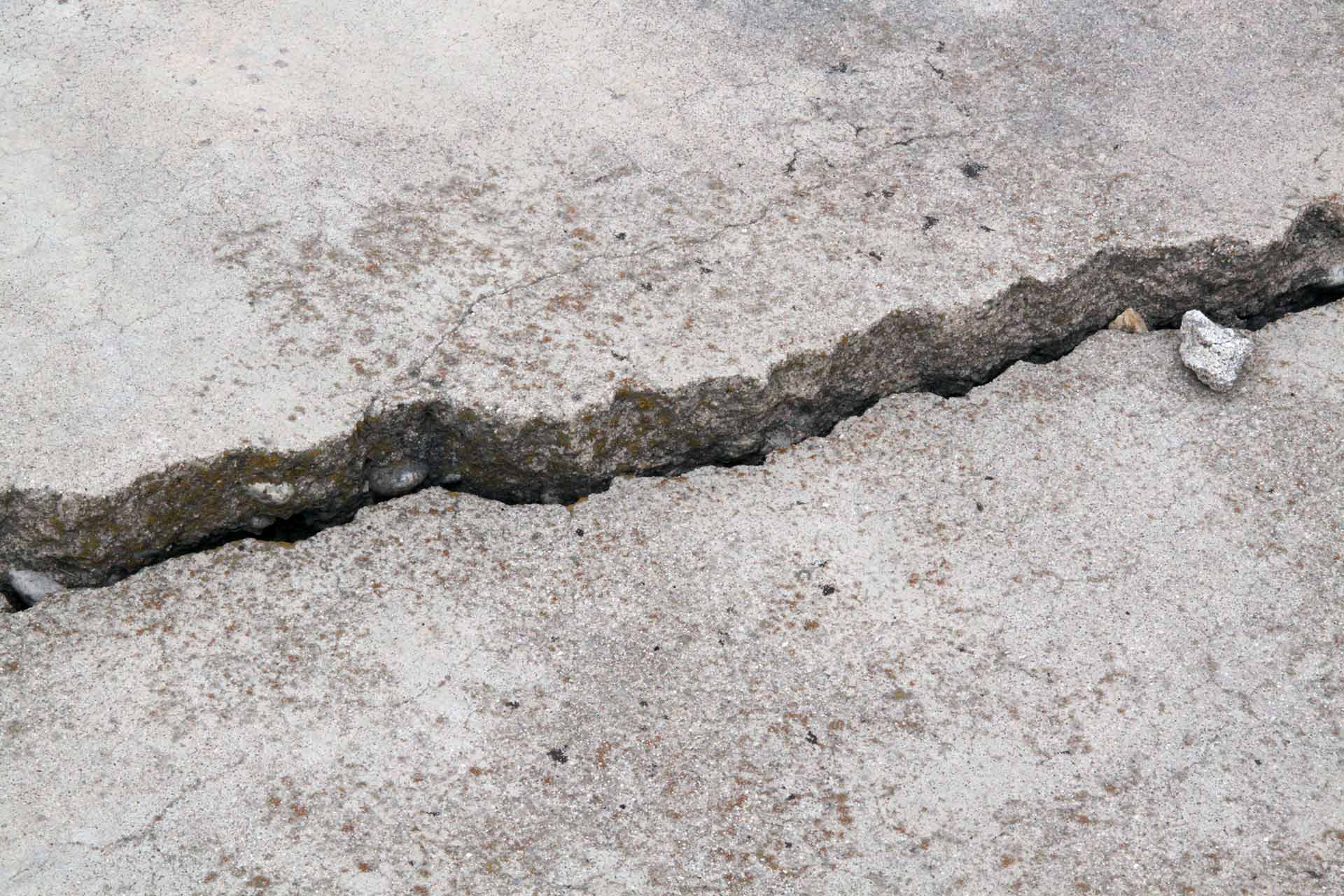Signs of Concrete Problems
If your concrete driveway, sidewalk, garage, or pool deck has seen better days, Matvey Foundation Repair’s experienced team of experts can help repair your damaged concrete, and level your sinking concrete slabs.
Pitting, flaking, staining, cracking, and sinking are all issues to look out for. However, it is always better to stay ahead of the problem than to react to one.
Below, you can find some of the prominent signs that your concrete may be in trouble down the line.

Dry Soil
Dry soil, whether caused by a draught or considerable heat, can shrink underneath a concrete slab. When that happens, pockets of space are created under the concrete, and the concrete will eventually crack and crumble to fill those pockets.
Flooding
When rainfall is abundant, moisture can work its way underneath your concrete slab, especially if dry soil has already caused it to crack. When this happens, the ground beneath can become too weak to support the slab, leading to soil erosion or soil washing away. That corrosion creates larger pockets of empty space beneath.
Poorly Compacted Soil
Construction and high foot traffic can disturb the soil to the point where it will never be quite as compact and stable as it once was. Because of this, concrete slabs will have an easier time settling and becoming uneven over time.
Moisture Damage
Concrete is a porous material, which means moisture is likely to find itself trapped in those nooks and crannies all across the surface of a slab. When the weather gets cold, moisture can freeze, leading to pits, flaking, and staining.
Damage Due to Street Creep
If your driveway is connected to the concrete slabs of your street’s sidewalk, you might want to worry about how they interact.
When it gets cold, objects contract, and that applies to concrete slabs. During the winter months, the slabs in your street’s sidewalk will contract, opening the joints between each slab. Over time, debris like rocks and pebbles will fill those open joints.
When the summer rolls in and those slabs expand again, they cannot return to quite the same shape due to all the incompressible material between each slab. This forces sidewalk slabs to expand in the direction of your driveway, leading to a variety of damages.



